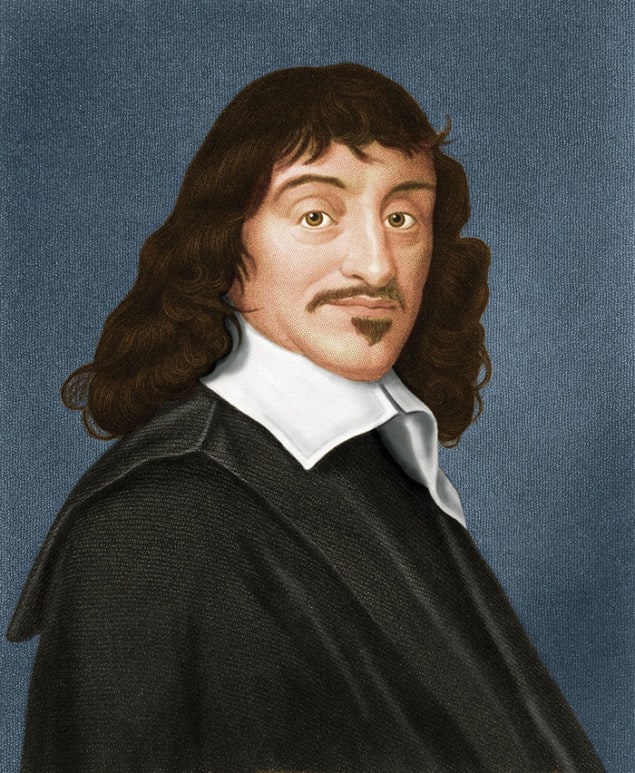Robert P Crease responds to criticisms of René Descartes made by Nobel laureate Steven Weinberg and others

In the Wallace Collection in London is a sculpture entitled “Descartes Piercing the Darkness of Ignorance”. Completed by Robert Guillaume Dardel in 1782, the sculpture shows the French philosopher, mathematician and scientist struggling to free himself from thick, enveloping clouds, inspired by rays of the Sun emerging from a hole in their midst. It casts René Descartes (1596–1650), who played a foundational role in both describing and using the scientific method, as a triumphant liberator. “No other great philosopher,” observes the venerable Dictionary of Scientific Biography, “except perhaps Aristotle, can have spent so much time in experimental observation.”
Recently, however, Descartes’ image has come under attack. Despite being a pop-culture celebrity for his philosophical remark “I think, therefore I am,” Descartes is routinely scorned for scientific and philosophical missteps. In his 2015 book To Explain the World, for instance, the Nobel-prize-winning physicist Steven Weinberg writes: “For someone who claimed to have found the true method for seeking reliable knowledge, it is remarkable how wrong Descartes was about so many aspects of nature…his repeated failure to get things right must cast a shadow on his philosophical judgement.”
Weinberg elaborates in crisp, no-nonsense prose: “[Descartes] was wrong in saying that the Earth is prolate (that is, that the distance through the Earth is greater from pole to pole than through the equatorial plane). He, like Aristotle, was wrong in saying that a vacuum is impossible. He was wrong in saying that space is filled with material vortices that carry the planets around in their paths. He was wrong in saying that the pineal gland is the seat of a soul responsible for human consciousness. He was wrong about what quantity is conserved in collisions. He was wrong in saying that the speed of a freely falling body is proportional to the distance fallen. Finally, on the basis of observation of several lovable pet cats, I am convinced that Descartes was also wrong in saying that animals are machines without true consciousness.”
How, then, can Descartes deserve to be portrayed as a herald of enlightenment?
The answer lies literally in the clouds – those from which Descartes is emerging in Dardel’s sculpture. These symbolize the lingering influence both of Aristotle and of the Church.
Sequestration
Aristotle’s world was composed of different places (Earth and heavens) populated by different substances (on Earth, natural things and human creations) that obeyed different laws. In his work, The World, which Descartes planned to publish in 1633, he pictured a single universe full of mechanisms that obeyed the same laws. Plants, animals and human bodies were mechanisms (though the latter were connected to souls). The rest of the natural world, too, behaved mechanistically, from sticks and stones to the Sun, Moon and planets. “I have described…the whole visible world as if it were only a machine in which there was nothing to consider but the shapes and movements [of its parts],” Descartes wrote. The scientists’ job was to figure out the mechanisms.
Then Descartes learned of Galileo’s condemnation. Although he was living at the time in the Netherlands, where he was beyond the reach of the Roman Church, Descartes was a believing Catholic and refused to publish anything heretical. But a heliocentric universe, the reason for which the Church had condemned Galileo’s work, was central to Descartes’ mechanistic picture. He therefore withdrew The World and wrote an essay describing his personal path to the new science as the preface to three non-controversial scientific articles he published in book form.
Now known as the Discourse on Method, this essay is one of the finest pieces of philosophical writing. He wrote it in French rather than Latin, so “even those who have not been to school can understand it”. In it, Descartes describes how one day – after long frustrations not knowing which of his beliefs were true, false or ungrounded – he sequestered himself and tried to set aside all received opinions to see if, among all his ideas and opinions, he could hit bedrock.
He could. Try saying to yourself – and meaning it – “I am not now thinking.” You can’t. No politician, theologian or even a God can convince you otherwise. That was only the first of an entire realm of truths that Descartes found he could know and reason about without theology and authority being at all relevant. If you do science this way, starting from clear and distinct ideas and making sure the results hang together like mathematics, he argued, you can’t be heretical. Doing science is like sequestering yourself from the world and theological issues, and those who do it no more reject that world than sequestered members of a jury question the authority of the legal system that set them up.
The critical point
In the end, Descartes got many of the world’s mechanisms wrong. But this should not obscure Descartes’ foundational role in modern science. His far-reaching contribution was to demonstrate how much you can understand of the world when you compose and test mechanisms and models. In his widely read and influential Discourse, Descartes modelled for followers what it is to act like a scientist.
Imagine belittling Adam Smith’s credentials as an economist just because his “pin factory” – the famous thought experiment that he deployed to show the benefits of the division of labour and capitalism – couldn’t cut it in the modern marketplace. Or imagine disparaging Copernicus’s astronomical credentials because he pictured the planets as moving in circles rather than ellipses. While Weinberg is right that Descartes got many of the world’s mechanisms wrong, this does not affect Descartes’ foundational role in establishing the scientific method. For, ironically, Weinberg’s criticism is based on a mechanistic way of thinking that it was Descartes’ extraordinary contribution to help legitimate.



